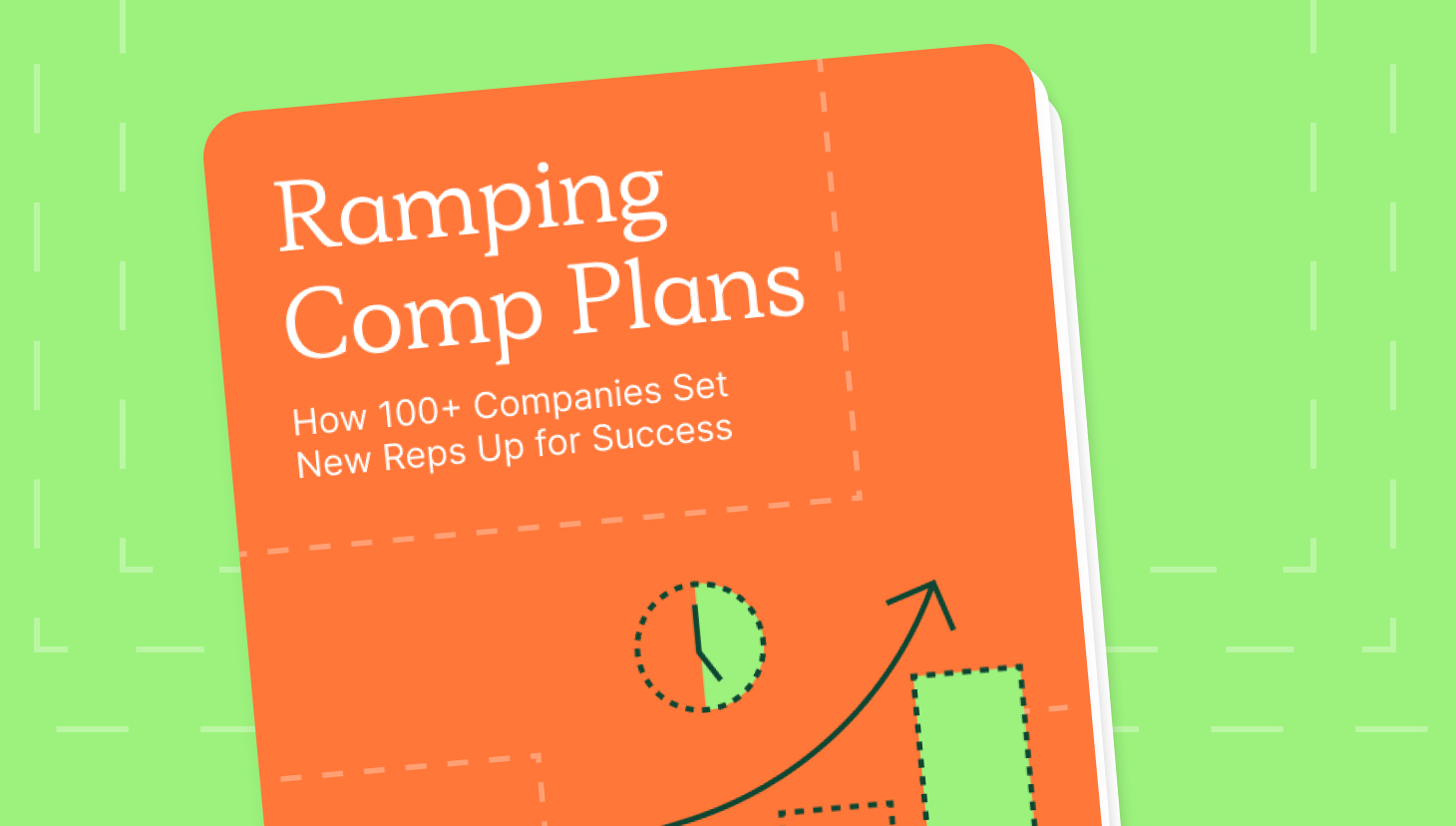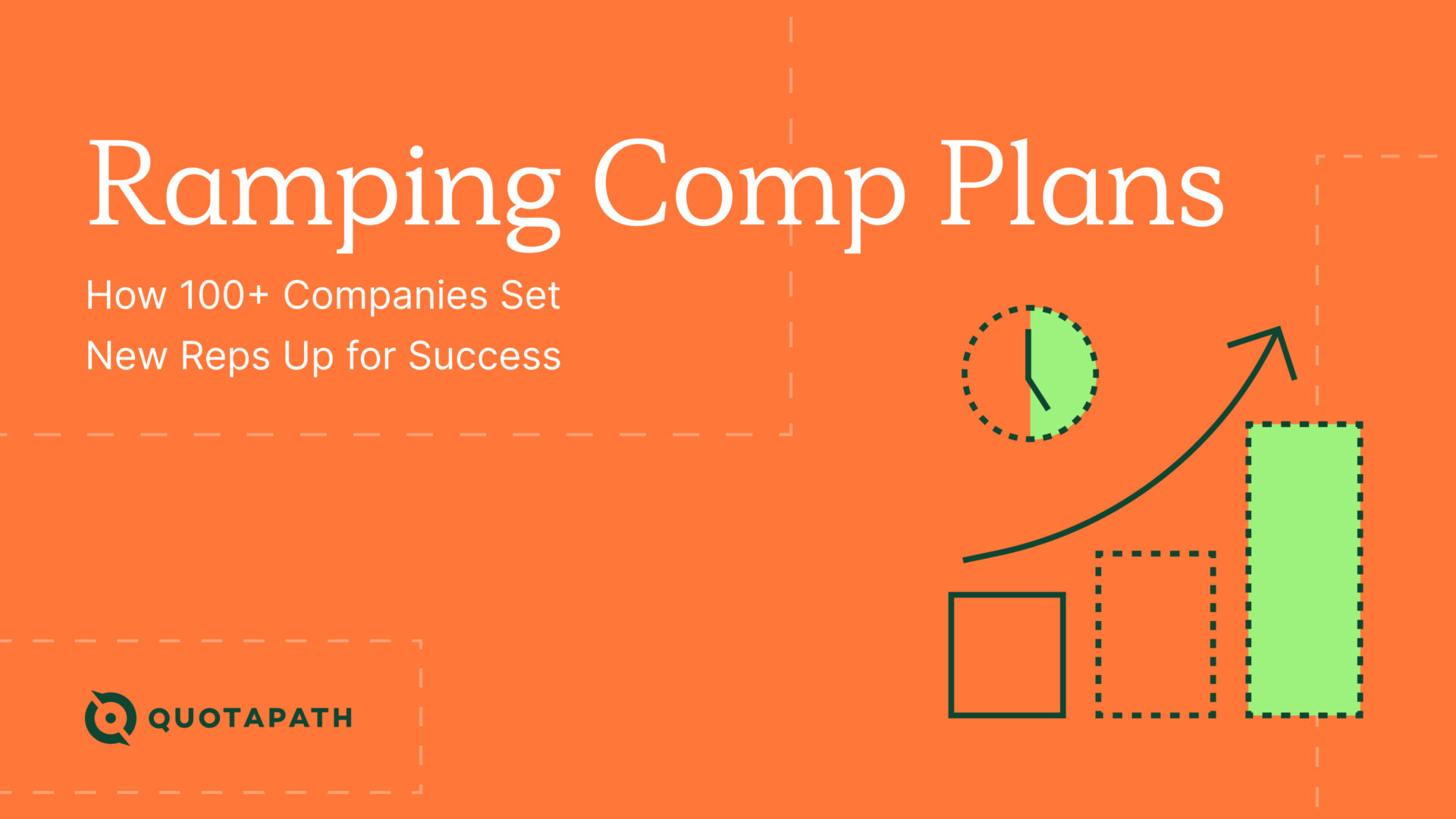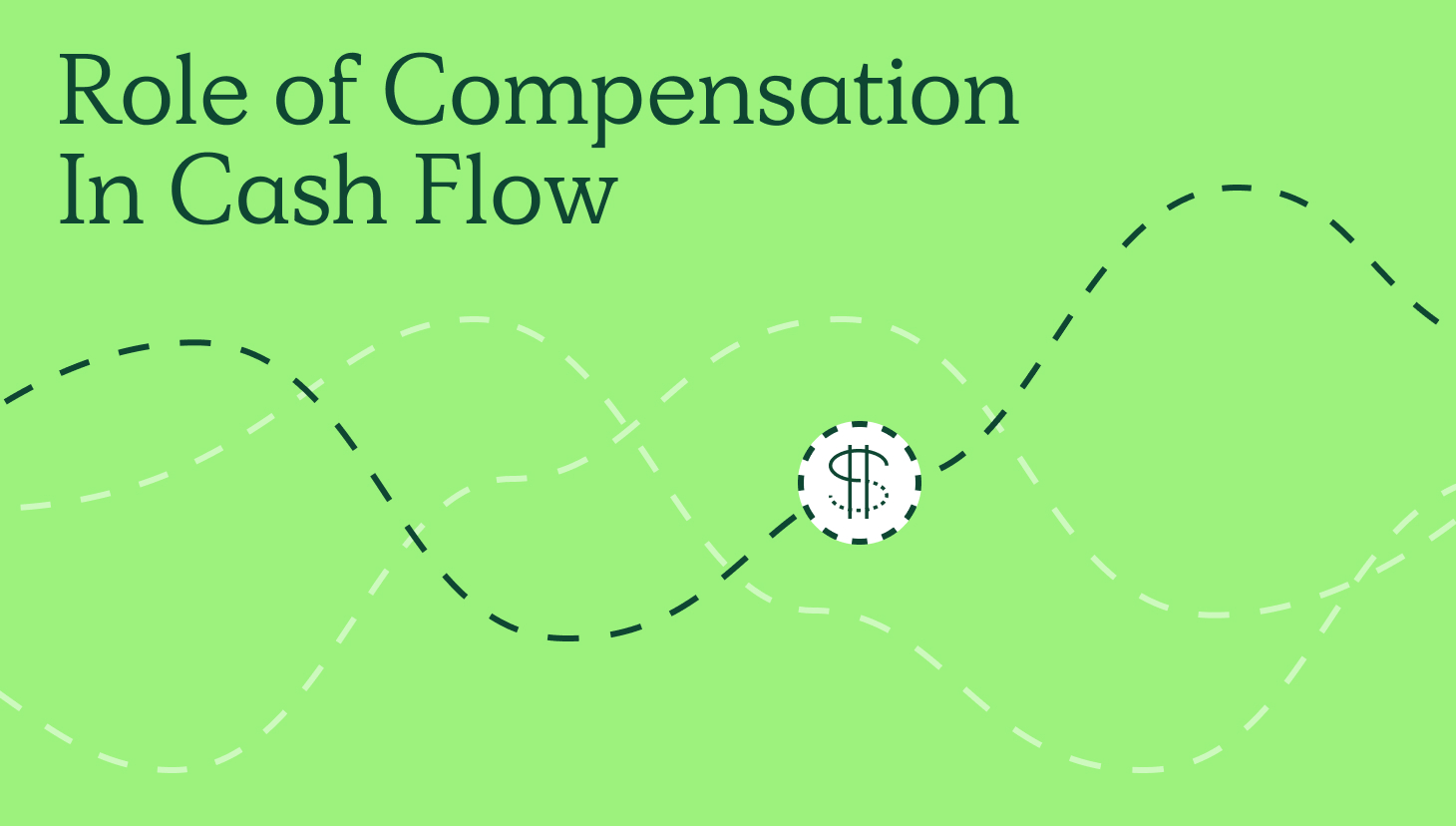Ramping a new sales rep is one of the trickiest balancing acts in revenue leadership. Reps need time to build pipeline, but the business needs bookings. Enter ramping comp plans: the not-so-secret weapon that aligns early rep activities with long-term performance goals.
We surveyed 114 revenue leaders across team sizes and industries to learn exactly how they’re building these plans. The results? Tactics you can borrow today to design a ramping strategy that supports new hires and hits your number.

Report: Ramping Comp Plans
See how 100+ revenue leaders set their new reps up for success by creating ramping comp plans with adjusted quotas and commission rates.
View Report6 Months is the Sweet Spot
While ramping timeframes vary, six months was the most common ramp period among respondents. For companies with long sales cycles, that stretch can extend to 12-18 months. The takeaway: base your ramp period on your sales cycle length and how long it truly takes for reps to close their first deal.
Draws, Reduced Quotas, and Safety Nets
40% of companies provide guaranteed commissions during ramp, mostly through draws:
- 20% use non-recoverable draws
- 10% use recoverable draws
- 10% offer flat-rate bonuses
Smaller teams (1-10 reps) are more likely to offer higher commission rates with lower quotas. Meanwhile, 100% of enterprise teams (101+ reps) rely on reduced quota structures to give new hires breathing room.
Adjusting Quotas is the #1 Ramping Tactic
The most widely adopted ramping method? Lowering quota expectations. This allows reps to focus on pipeline generation before jumping into the deep end. Some companies pair this with higher commission rates to keep early earnings competitive.
An example progression might look like:
- Month 1: 25% of full quota
- Month 2: 50%
- Month 3: 75%
- Month 4+: 100%
Or a quarterly model with quotas ramping 50% > 75% > 100%.
Accelerators: Earn More, Earlier
Only 30% of companies allow reps to hit accelerators during ramp. But when used, this tactic boosts early motivation and rewards high performers from day one. For companies that delay accelerators until full ramp, the goal is to prevent overpaying before consistent performance is proven.
Activity-Based Pay? Not So Much
Less than 3% of teams tie ramp pay to activities like calls or demos. The majority reward only closed-won revenue. However, several leaders noted they’re exploring MBO-based ramp plans to offer structure before deals start closing.
Ramp Plan Examples to Steal
Here are some real frameworks from survey respondents:
- Small team (1-10 reps): 6-month ramp. First 3 months focus on pipeline only. Months 4-6 carry progressive quota (33%, 66%, 100%). Accelerators kick in at full quota.
- Mid-sized team (11-50 reps): Reduced quota with flat-rate payout. Bonus if rep hits full ramp quota. Accelerators delayed until post-ramp.
- Large team (51-100 reps): 90-day ramp. Non-recoverable draw instead of reduced quotas. Accelerators allowed during ramp.
Want to see how your plan stacks up? Try our free Ramp Calculator to model your own.
Streamline commissions for your RevOps, Finance, and Sales teams
Design, track, and manage variable incentives with QuotaPath. Give your RevOps, finance, and sales teams transparency into sales compensation.
Talk to SalesFinal Thought: Ramp is Your First Chance to Get Comp Right
The right ramping comp plan doesn’t just shorten time to productivity. It builds trust. It aligns effort with earnings. And it sets the tone for performance expectations going forward.
With QuotaPath, you can design, implement, and communicate comp plans that reps actually understand. Use our intuitive builder to create structured ramp plans, add transparency with deal-by-deal earnings visibility, and drive the right behaviors from day one.
Want to see how it works? Schedule a demo and let’s build your best ramping strategy yet.
Lastly, need more data? Don’t miss our Q1 Spiff Report for insights into tactical short-term incentives.



